The Pioneer PL-514 belt-drive turntable is an absolute classic. Let’s find out why.
The Pioneer PL-514 is a high-quality, great-sounding belt-drive deck from one of the big Japanese manufacturers. In terms of build and performance, like so much other Japanese gear, it puts many other belt-drive decks to shame. The motor alone is far better than you’ll find in famous turntables from Rega and Linn. This is so typically Japanese, but more on that later.
Updated for 2023!
Check out my video, below, and read on for more details.
Description
The Pioneer PL-514 is a high-performance belt-driven turntable that employs an auto-return mechanism. Other features include an anti-skating force control, cueing device, detachable dust cover, insulator feet, plug-in type headshell and a 40mm thick particleboard cabinet.
For what you pay, you get a heck of a lot of turntable with the PL-514. I mean, this thing punches far above its weight, right up into decent direct drive territory and beyond. You could pay $2000 AUD for a new turntable and I promise you it won’t be as nicely made, nor will it sound as good or be as collectible later.
Pioneer PL-514 Specifications
Courtesy of Vinyl Engine
Type: auto-return turntable
Drive method: belt drive
Motor: 4-pole synchronous
Speeds: 33 and 45 rpm
Wow and flutter: 0.055% WRMS
Signal-to-noise ratio: 65dB
Platter: 320mm aluminium alloy die-cast
Tonearm: static balance type, pipe arm (s-shaped)
Effective length: 221mm
Overhang: 15.5mm
Usable cartridge weight: 4 to 10g
Dimensions: 440 x 365 x 140mm
Weight: 7.5kg
Service
I serviced and upgraded this one for her owner. I installed a Jelco HS-25 magnesium headshell, Ortofon 2M Red moving magnet cartridge, new belt and cleaned and lubed the motor, deck mechanisms and bearing.
Doing all this work takes time but the results are well worth it. The deck’s noticeably quieter post-service and runs with less wow and flutter. It looks better too and the new Ortofon 2M Red cartridge and Jelco headshell really lift performance and freshen her up.
This Pioneer PL-514 runs perfectly now and plays a record very nicely. I highly recommend you look for one of these if you need a good, solid record player that will likely last for another 30 years!
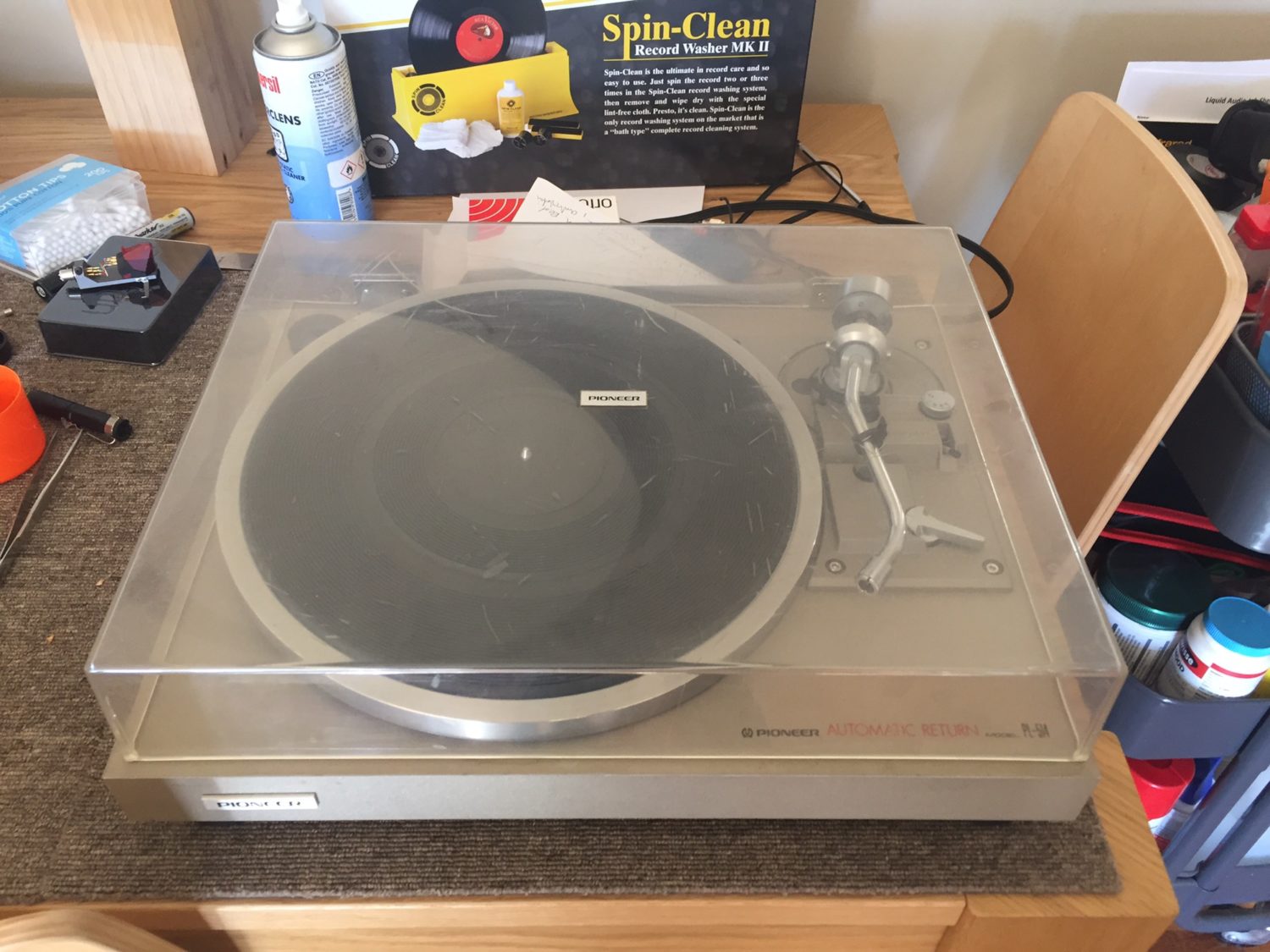
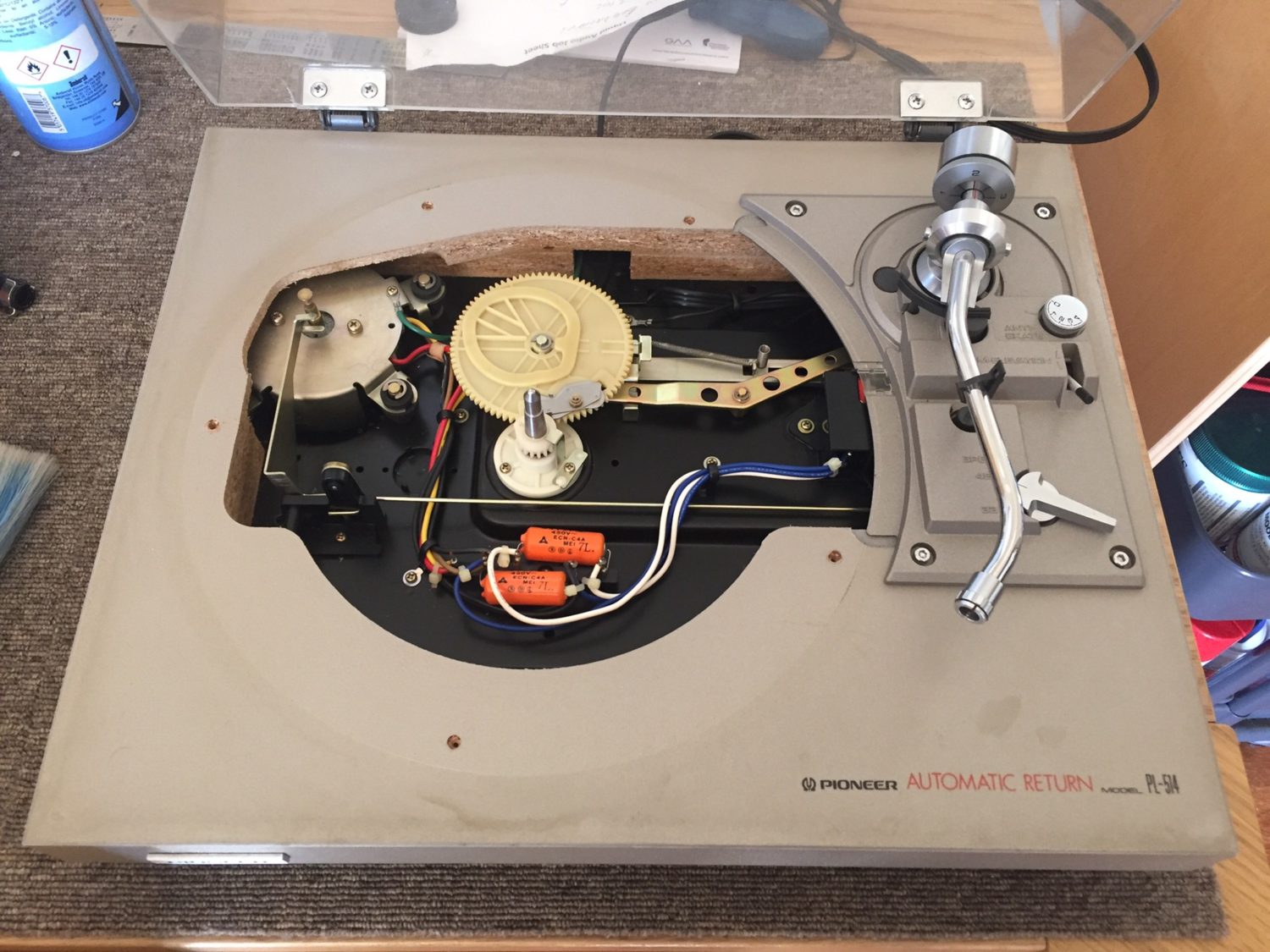
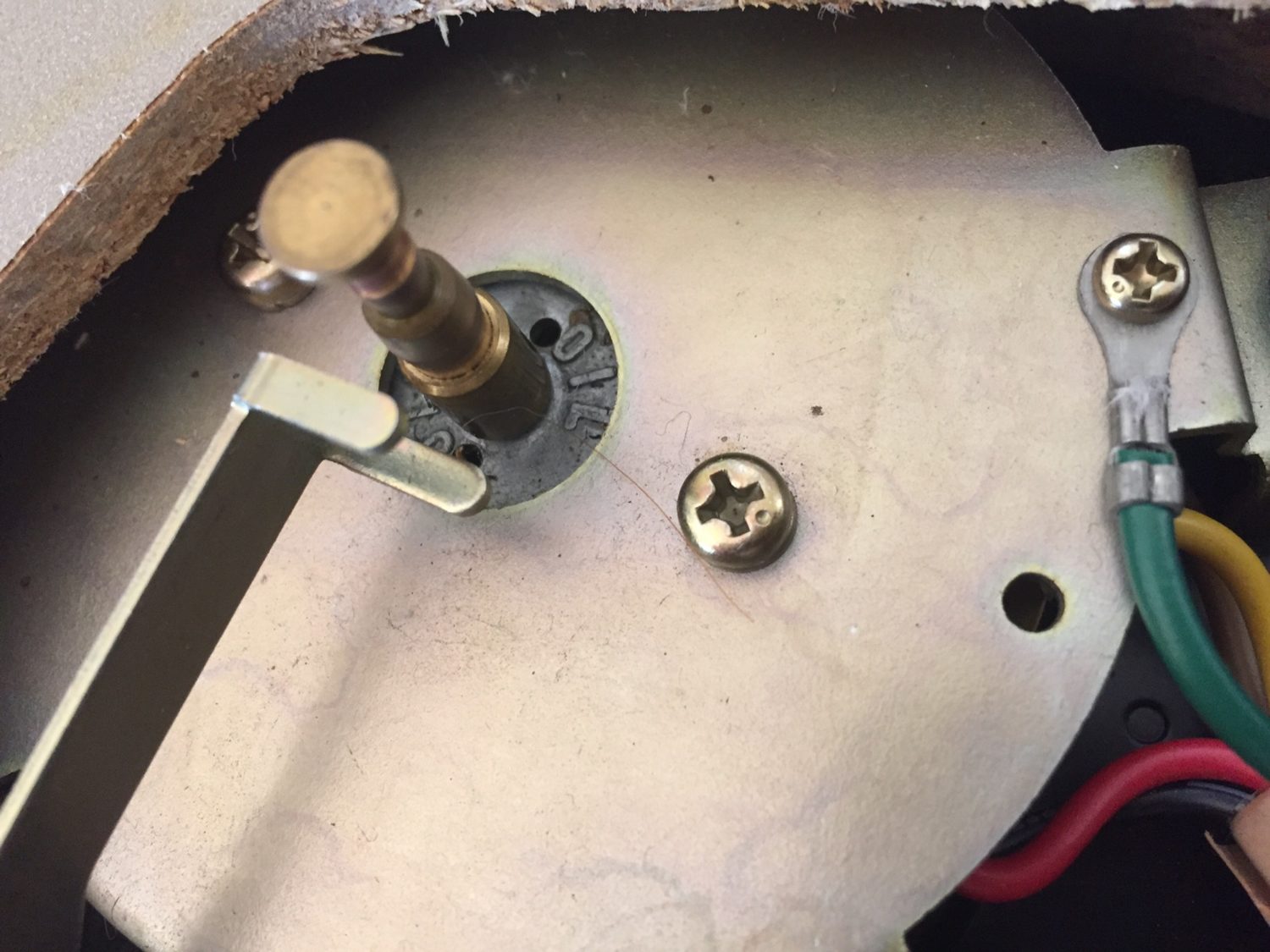
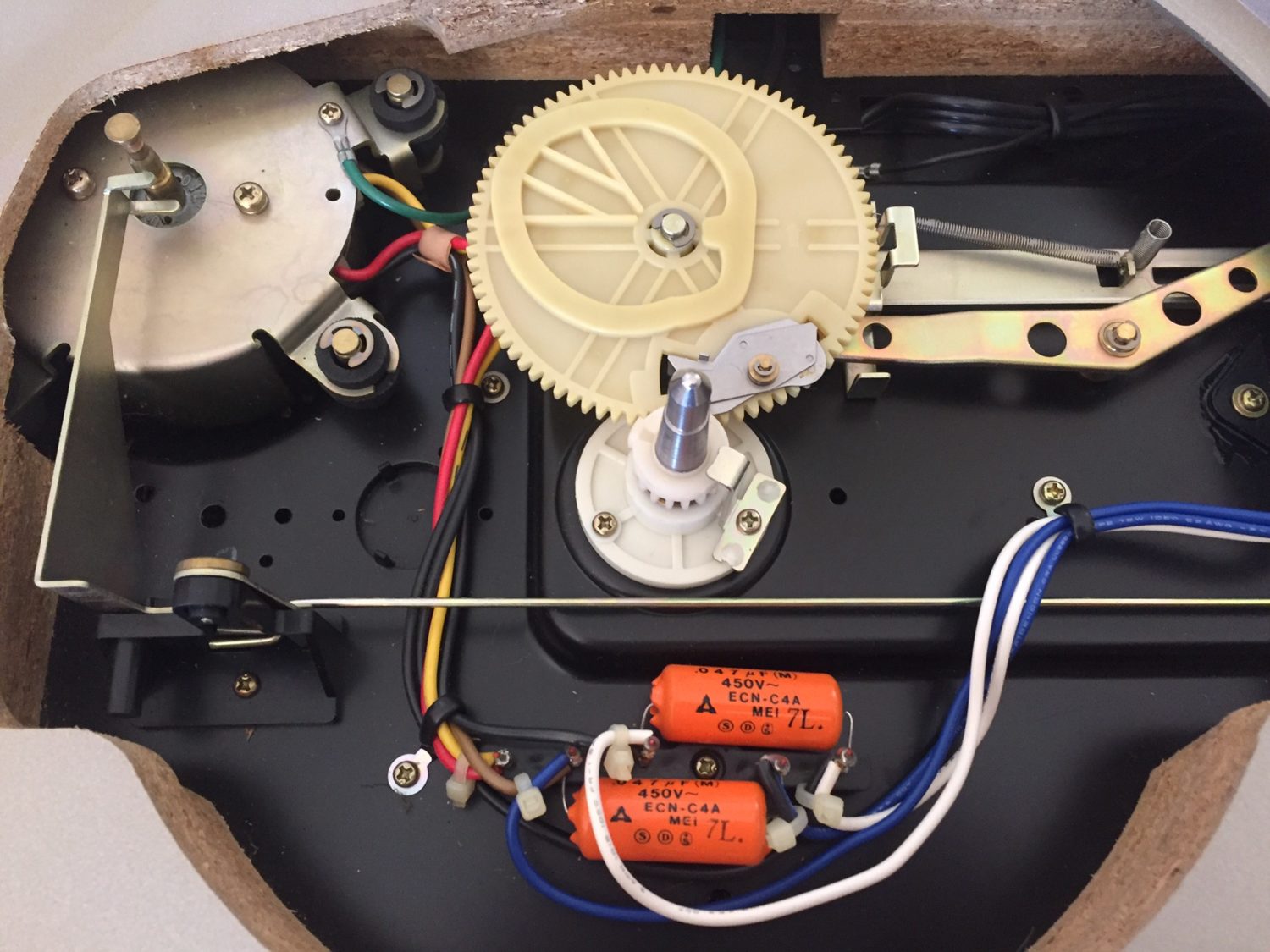
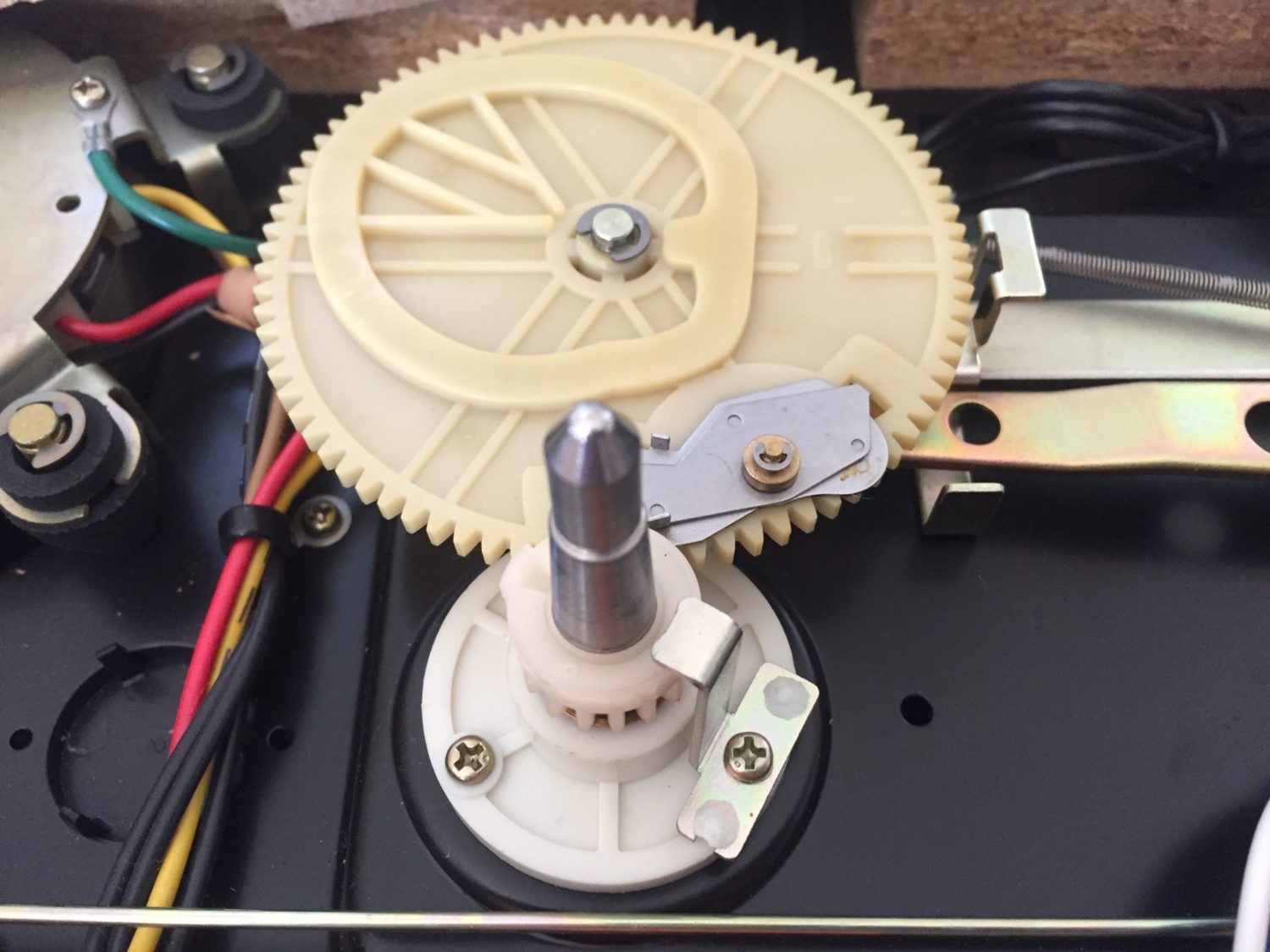
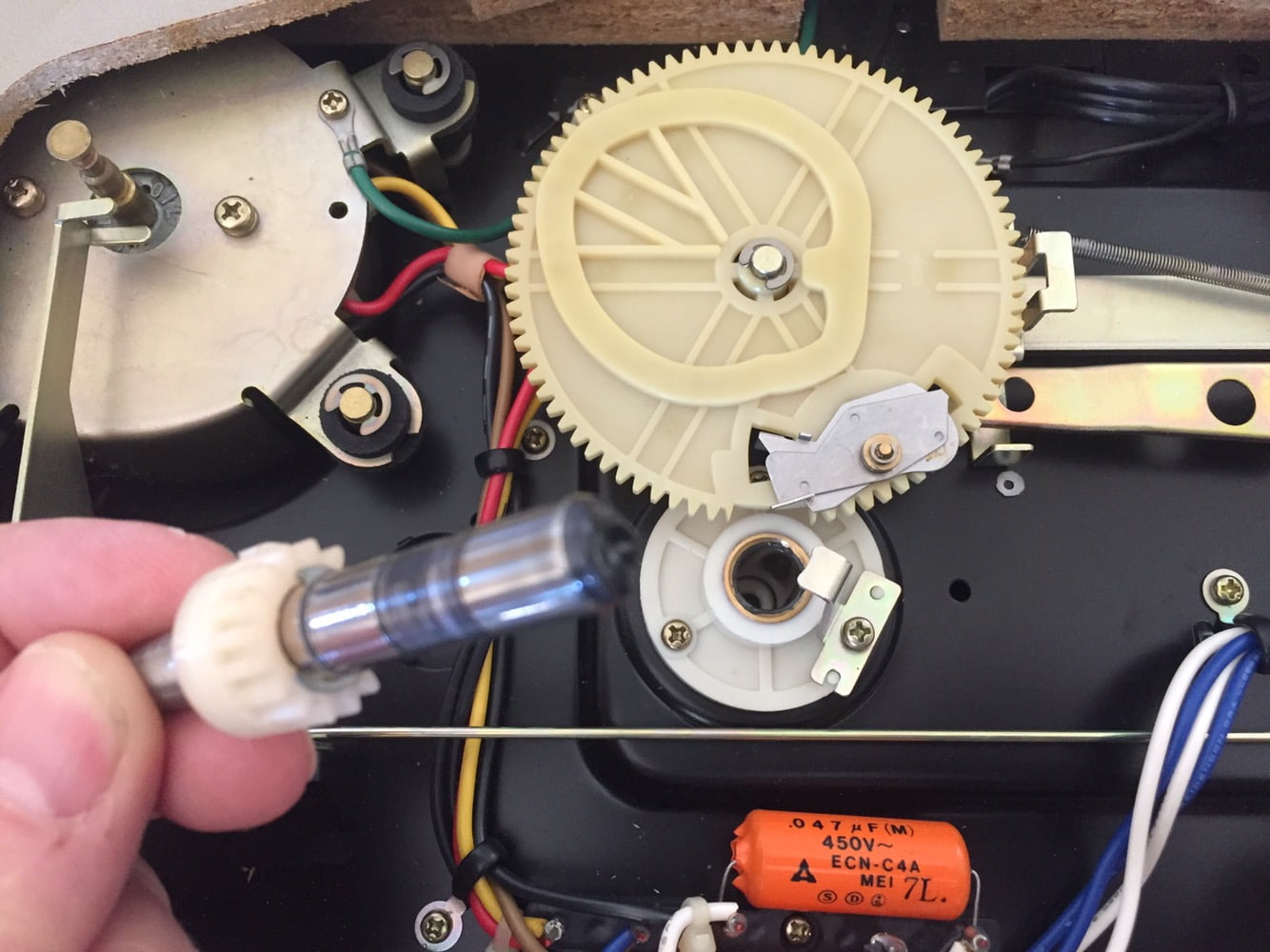
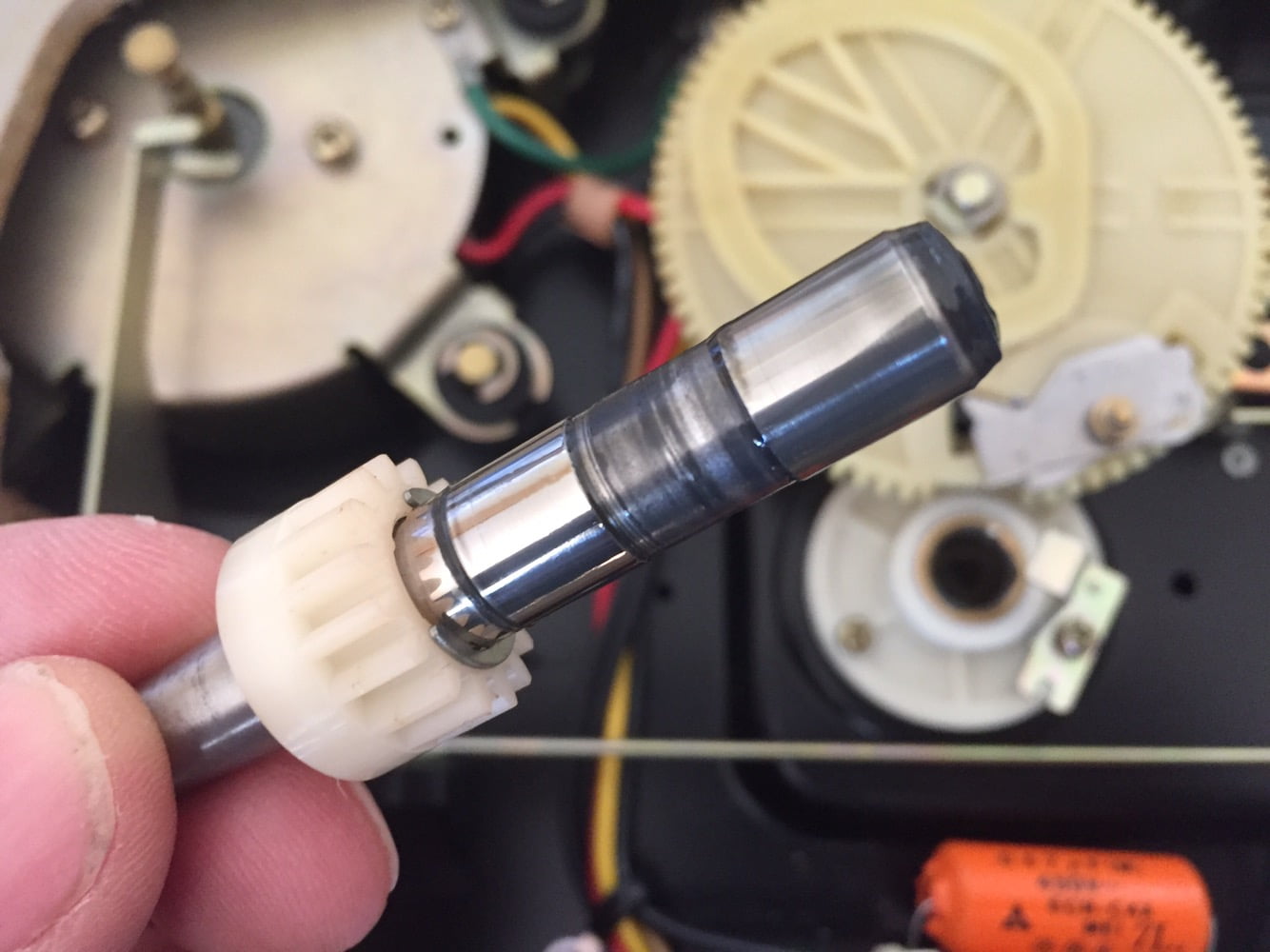
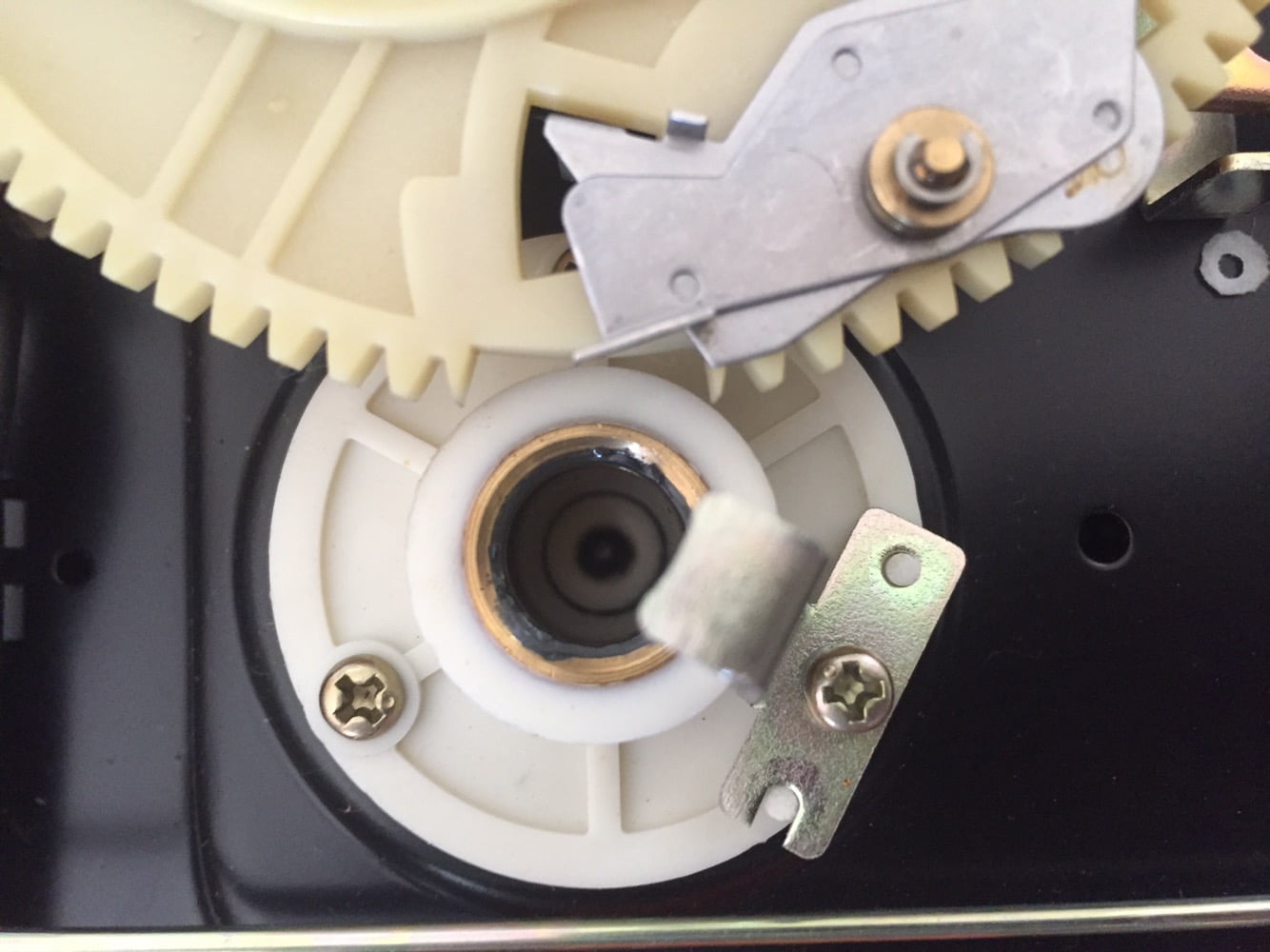
Performance
The Pioneer PL-514 is one of those classically underrated turntables that many don’t seem to even know about. Talk about solidly built, the PL-514 is so far ahead of decks like the Rega P1 and Pro-Ject Debut whatever, that frankly, it’s embarrassing. This deck crushes cheap modern machines and walks all over them sonically and in terms of build.
“Mike, there is no way the Pioneer PL-514 motor is better than those found in expensive Regas and Linns…”
Oh, it is better, much better. It just shouldn’t be. This is what Japanese engineers and businesses did/do so well, much to the chagrin of everyone else. That an affordable deck like this is so well-engineered is a marvel, hats should be off to the design team and to Pioneer.
The PL-514 has excellent speed accuracy, a lovely tonearm, a super-solid chassis, motor, and lid and is just generally such a loveable machine that I would honestly have one as a spare deck if I had the space. They really don’t make turntables like this anymore, certainly not that the average buyer can afford.
The Pioneer PL-514 is the little belt-drive turntable that could, offerring a taste of high-end on a beer budget. Seriously, grab one, if you can.
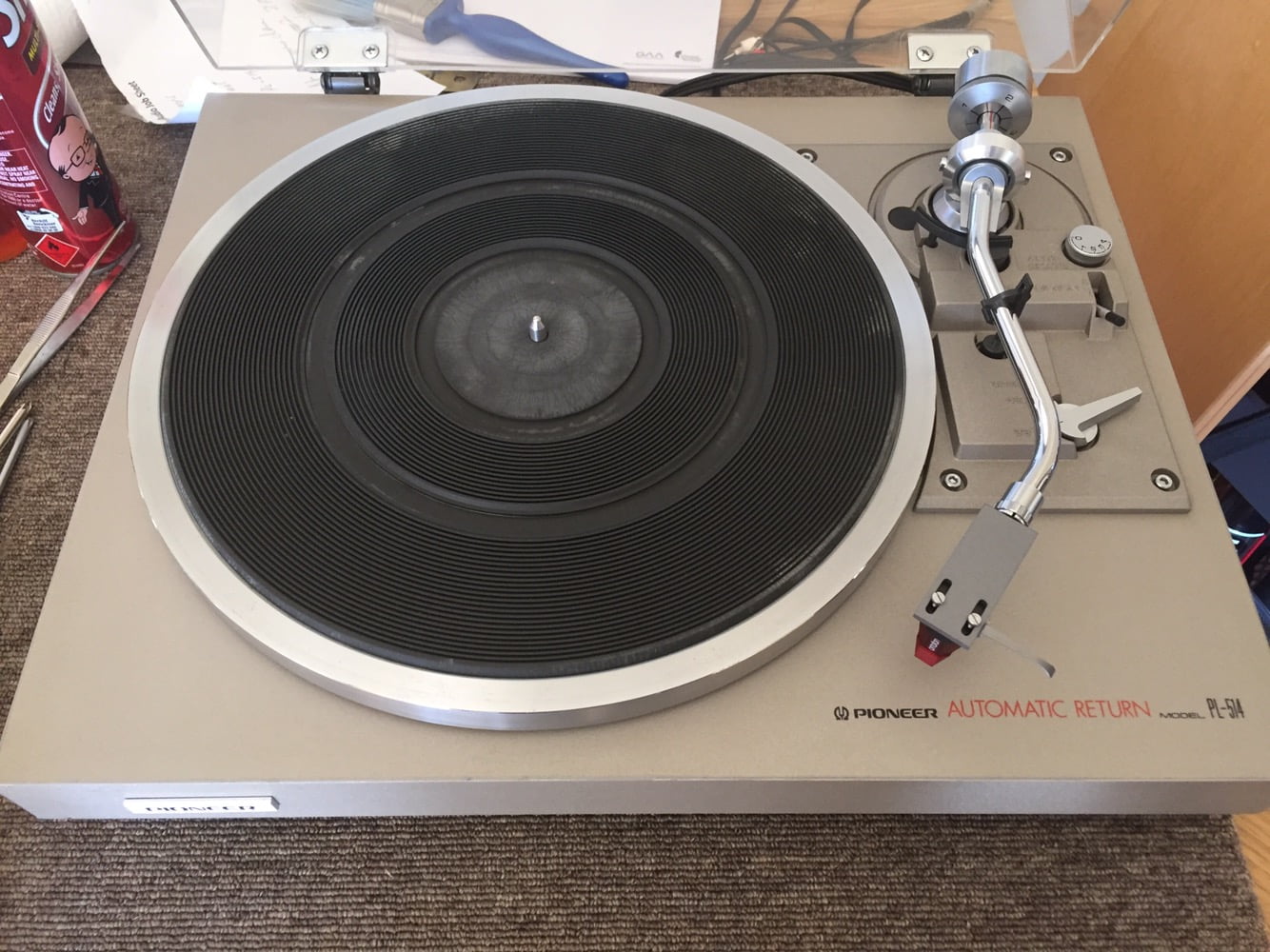
Improvement
You may note that I’ve replaced the headshell here and installed a new cartridge, fasteners and precision rubber drive belt. There are/were good reasons for doing so, relating to performance and my customer’s requirements.
Keep in mind that fitting a new headshell and correctly setting up the cartridge to suit is something requiring good tools and expertise to accomplish correctly. I’ve written about cartridge alignment in various places, here is a great starting point, then read this.
Support Your Local Specialist!
If it weren’t for articles like this one, most would never have heard of the Pioneer PL-514, so I’m glad you stopped by! Unfortunately, many including my competitors, soak up all the useful information but forget about their local, hard-working specialist, who creates this great content for the benefit of hi-fi equipment lovers.
If you enjoy articles like this, please support me. If this review has helped you, you can shout me a drink to say thanks using the donate button in the footer. You can also reach out for advice or to let me know you’ve enjoyed the article. Oh, and if you are a competitor, at least credit me for your ‘discovery’ of this great deck! 😉
Best of all, I’d be happy to service your Pioneer PL-514, fit a new headshell, cartridge, fasteners and wires and anything else that fits in with your budget. When you use a local specialist repairer, you build a relationship with someone who actually cares about you, your equipment and the result. Try getting that from a zero-service online retailer!
Discover more from LiQUiD AUDiO
Subscribe to get the latest posts sent to your email.

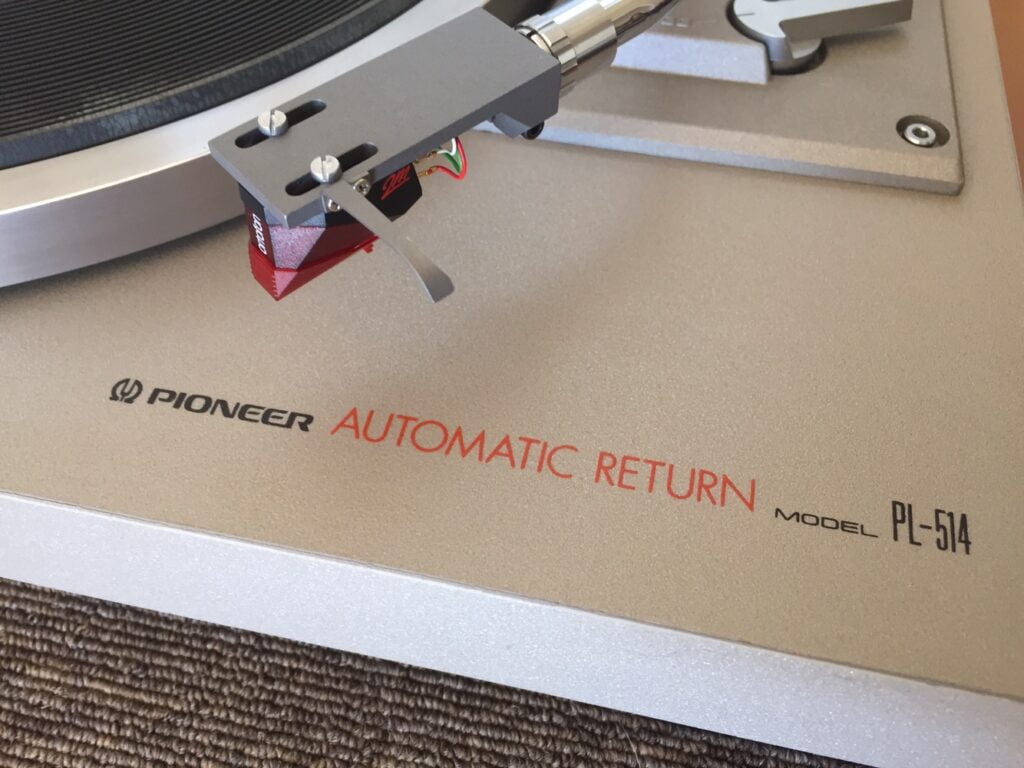
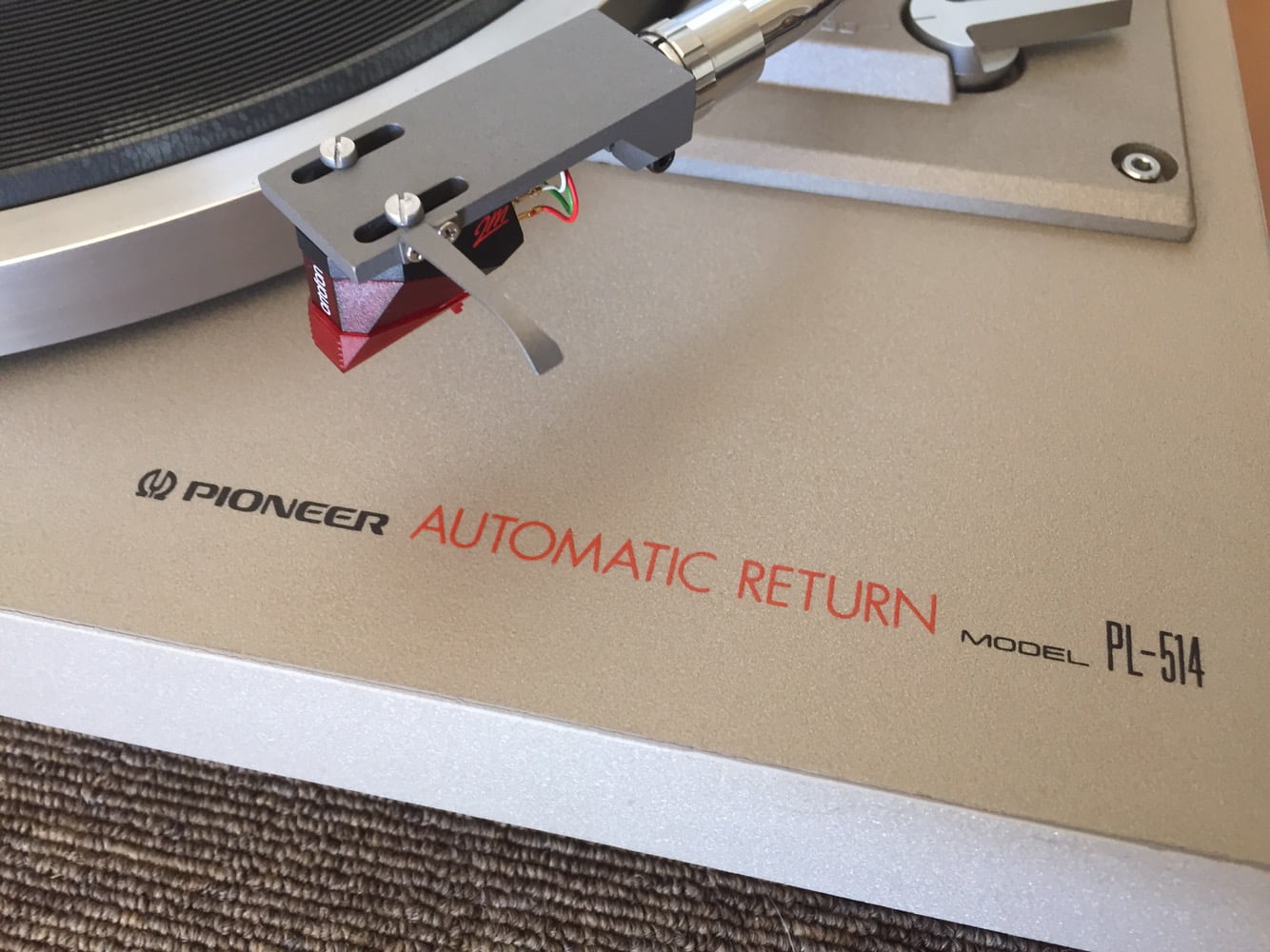

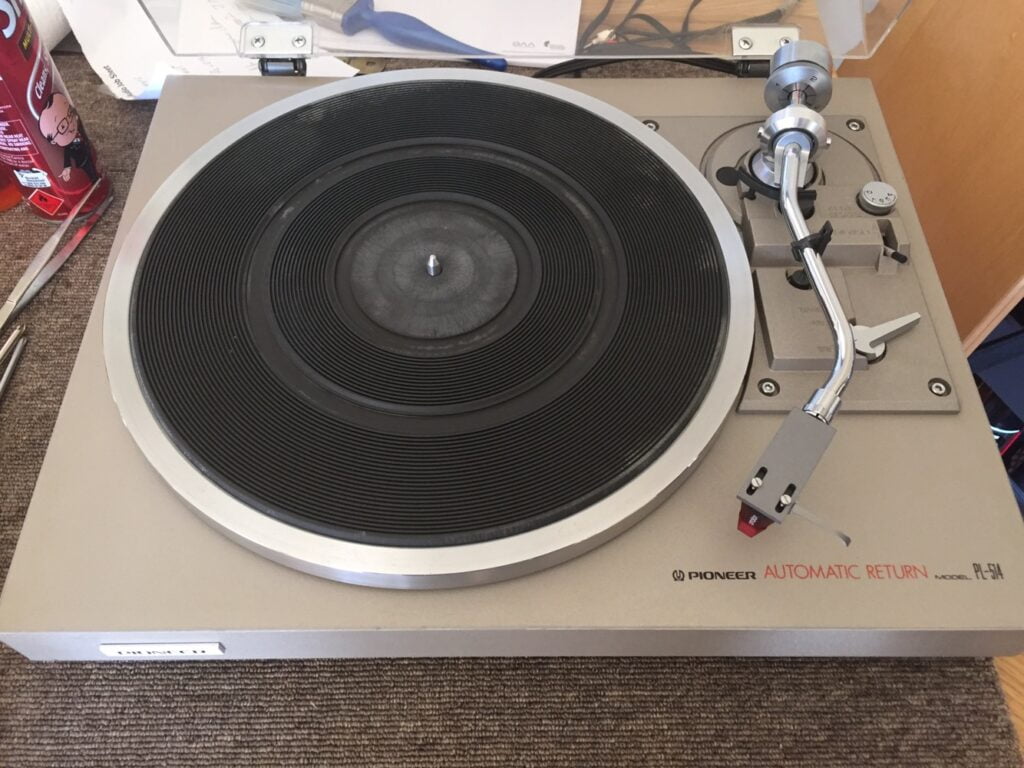


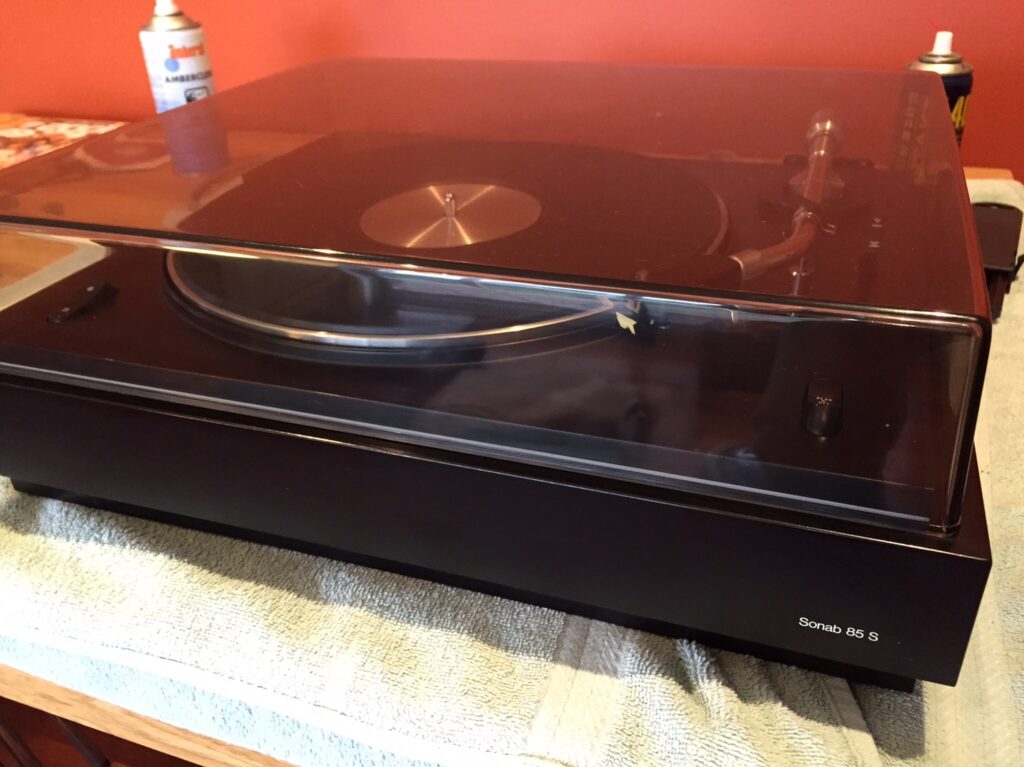
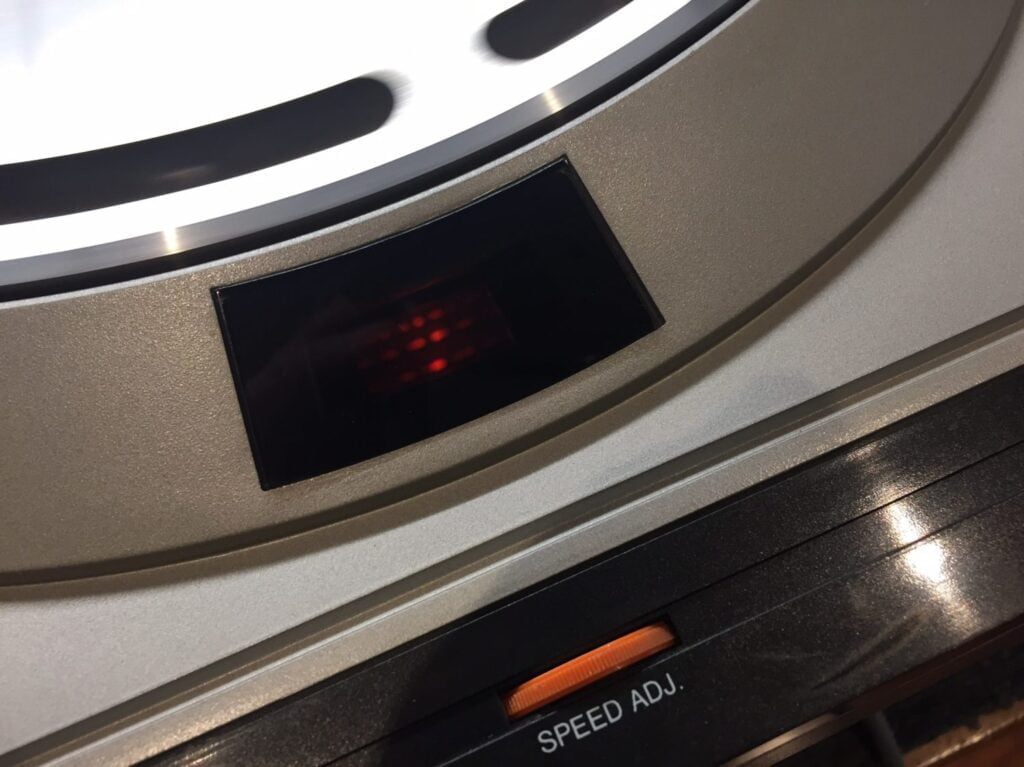
Hi Mike
Thanks for the great work on this turntable. It sounds amazing with the service plus new headshell and cartridge. Have owned this for close to 40 years so it was well overdue for a service. Looking forward to many more years of enjoyment.
It’s nice to know there is someone who can service and fix these things rather than having to replace.
Regards
Norm
Wonderful feedback, thanks Norm. I’m thrilled that she is sounding so good now! Best, Mike.
Hey, could u point me in the right direction for finding lube for this and what brand?
Hi Jacob, lots of different lubricants are needed to work on turntables. I use a range of products, most of which aren’t available in retail stores, but are from commercial vendors. If you are looking for a bearing oil, one option is a roughly 30 weight mineral oil.
Hello Mike thank you for showing reviewing this turntable I have one also I bought refurbished and after 5 just added a few drops of lubricant to it. The next step though for me is to change the photo rca cablevto an updated one as this has got the original and I think might make a difference. What do you think? Can you tell me how to do it? Thanks
Hi Erkan and thanks for writing! I suggest you stick with the original RCA cable on a deck like this. Japanese manufacturers used good quality cable and on a deck like this, the supplied cable provides a good balanced setup.
Excellent, thanks for the reply mike! It’s cleared things up for me. One more question. I have bought 4 nickel plated damping cones/spikes, but now i have heard from forums that its a bad idea for turntables. What do you think if i change the original rubber feet to these? I find the original feet doesn’t isolate or dampen pretty well.
Hi Erkan, I agree and suggest you retain the original rubber feet. There are all sorts of vibration absorbent pads you can add to turntables to reduce transmission of ambient vibration, like Vibrapods for example. Perhaps look at these, and at the way your turntable is situated.
So if I was to buy these vibrapods do I replace the original rubber feet or just sit turntable with original feet on the vibrapods?
You could do either, might be best to experiment with both methods.
This is awesome. Just rescued one from going to the dump. Needs some work and this page will help a lot!
Great news David and thanks for stopping by!
Nice job!! I have a PL-514 that I’m bringing back into service and it needs just a touch of TLC.
What oil(s) do you recommend for lubricating the motor and the spindle on the PL-514? What do you use to lube the auto-return gearing? The queuing lever for the tonearm works ok, but I recall it being smoother; what do you recommend for re-lubricating it?
Thanks!
Hi Robert, thanks for the comment! I use a range of greases and oils and don’t really want to get too far into that here as it’s an involved topic, varies from deck to deck and the service manual is usually the best place to look for more information on this. Pioneer use a grease bearing for the spindle on this deck, so it’s best to use grease here. In this case and others like it, I use a premium, lightweight synthetic grease and it works very well. Elsewhere, straight 10 weight and 30 weight oils are handy, along with the synthetic grease for gears, but only where specified. I would need to check, but I don’t recall there being any grease on the auto return gears – check the service manual. I also use silicone oils for certain applications, like some cueing levers, but not all – again, this varies greatly from deck to deck.
Thanks! Sorry for the late reply …
I managed to get my PL-514 running, including regreasing the bearing/spindle using one of the Super Lube silicone greases. Now very smooth and quiet. The auto-return mechanism works fine as well without any additional lubrication.
The only issue is the cueing mechanism. It raises and lowers ok, but it’s a little noisy and seems to be a tad sticky. I was hoping you would suggest a proper viscosity range for replacing the silicone damping grease (I’ve seen anything in the range from 10,000 cSt to 300,000 cSt!), since you’ve already done this fix. I could always try trial an error, going from the most viscous to the least, cleaning in between, but I thought I’d see if you could suggest something (since I won’t be sending my ‘table from Texas to “down under”). There’s nothing in the service manual I found on-line. 🙁
Thanks again!
Good news so far and I suggest you try something in the middle of the range for the cueing lever. It varies from deck to deck, but give 80,000 – 100,000 a shot and see how that goes.
Have one at my cottage and one of the guests damaged the head. It is not usable and I do not know where can I get a replacement. Willing to get a new headshell, but do not know which one. Any advice would be greatly appreciated. Thank you!
Hi Eugene, when you say head, this isn’t a standard term so do you mean the stylus, the whole cartridge or the headshell? Each is available separately and costs vary according to what you want to achieve. If you live locally, I’d suggest the best thing is to bring the deck in for a look.
Mike! Thanks for this post – I got a Kenwood KD500 a while back on your rec and love it. I recently got a one of these tables as well. Everything seems to be fine motor-wise but I’ll do the cleaning and lubing. The only issue with the unit I got is that the auto-return function doesn’t work properly. The tonearm doesn’t make it back top the cradle but falls and rubs against the edge of the platter. I’m pretty good with mechanical things but since I screwed up working on a Technics SL-1900 I’m a little shy on working on this. Do you think this may be a job for a pro?
Hi Fatima, thanks for your comment and I’m glad the articles have been of some assistance. I’d say that this might be best taken to someone with experience working on these machines. It’s easy to damage things if you aren’t familiar with them and working on them all the time, so just be careful.
I have the slightly more humble PL 512X which is the manual version fitted with a Shure period MM cartridge . They sound terrific too. The build of them is astonishing , Enormous over engineering at it’s late 70s finest . I’ve had mine for over 33 years , a second-hand bargain that needed a cartridge and the mount had been lost from a general house clearance auction . I paid £28 for it as was and invested in a new Pioneer lid which in the late 80s you could still get as a new part from Pioneer. Still looks and sounds beautiful today and I don’t think I will ever sell it. Used as a secondary player to my modified Rega.3.
Great to see another happy Pioneer turntable owner out there, these are really great machines and I wholeheartedly agree regarding build and performance.
Hey Mike! I just picked this turntable up in great condition and well maintained. I’m glad I found your post. I want to update the cartridge at an affordable price range. A Stanton 500 cartridge came on my Pioneer. The sound is very flat and boring. I’m looking for something more lively, but still rich and full. Do you think your combination of Jelco HS-25 magnesium headshell and Ortofon 2M Red will accomplish my sound requirements and out perform the Stanton 500? Also, feel free to make any other recommendations. I really appreciate any help or response. Thanks, Mike
Hey Mike, the 2M Red is basic, the Blue sounds much nicer so I’d suggest that one as a minimum for a nice turntable like this. You might struggle to find HS-25 headshells now that Jelco is no more. I have a couple of decent alternatives but I supply and fit as part of service done here.
I have this model turntable. I got from my dad after he upgraded. At that time you couldn’t find a replacement stylus for it so the repair guy re wired it, worked great for several years.
Now it needs a new belt and a stylus.
Can you tell me if i can get a stylus for it now and if so where would i find one?
Hi Derek, this depends on what cartridge is fitted as you need a stylus to suit that cartridge. The part that worries me is the ‘re-wiring’ as we don’t know what this means and actual re-wiring is never necessary to accommodate a cartridge. Maybe something else was done? Either way, the deck should be serviced and set up correctly with a good quality cartridge and stylus. Let me know what cartridge is fitted if you get a chance.
Funny side note about my dads turntable. The first album he played on it was Pink Floyd’s Wish You Were Here.
The way that album starts it sounds very lo fi and scratchy. He’d never heard it before.
He said he was so mad about buying a peice of junk turntable he almost threw it in the trash then and there, lol.
Im sure glad he kept listening.
Classic story and an epic album, very glad he kept the deck!
Hi Mike, I enjoyed your article. I have a similar Model Pioneer PL514. The speed is not consistent. Do I need to change the capacitors. If so where can I purchase them and what is the version of the capacitors?
Hi Isaac, glad you enjoyed the article! Your deck is very unlikely to need new capacitors and highly likely to need expert attention and maintenance. Feel free to get in touch via the contact page for personalised advice as noted and if you live anywhere near me, you are of course most welcome to bring her in.
Hi Mike. Thank you for generously sharing your experiences with us. I bought this pl514 having read this, and then added a Jelco headshell plus ATMONO3/LP cartridge. This brings 50s and 60s records to life with a beautiful midrange, voices are just there, copper instruments beautifully realistic and subtly expressive and great pace/rhythm – and it bests a quite a bit more expensive dac in quite a few ways. I hope to receive a Kenwood 7010 soon (for stereo) since my first analogue adventure in 30 years was so positive. I’m in NSW which makes dropping something off a bit difficult, but you definitely seem someone who deserves the business.
Hi Eduard, thanks for that, I’m glad the article helped you and that you found a PL-514 for your system!
Cheers, Mike.
I have a PL-514, Man, is it built like a brick s—house. I have serviced it, replaced the belt and stylus. I have read about an issue of hum when the stylus is placed on the record. Not a ground hum, but one borne of vibration. I am now experiencing this myself. I have replaced the motor mounts with new old stock, which alleviated the problem for a few days. I guess everything settled, now the sound is back. I have considered adding little rubber o-rings atop the thin washers on the mounting posts, to take up any slack that has developed. How would you attack this problem? It would be a shame to take it out of service—it does so many things right. Thanks!
Hi Hank, glad you enjoyed this and yes, the 514 is a gem. I see a few of these and work through a standard process of elimination in terms of mechanical hum, involving all contact interfaces between motor, transformer and chassis. I fit new mounts sometimes using a custom solution I’ve developed. Your new old stock parts should in theory be OK, but they may have hardened over time, making them less compliant than they should be. O-rings are quite dense so consider that, and there should be some vertical play or float in the mounts, but try them. Stick at it as these decks do run very quietly with everything correctly set up and optimised.
Hi Mike,
I am working on one of these decks, and it does seem well made and a heavy tank! I am having an issue with it dropping the tonearm very quickly when the cueing lever is put down. How does one add dampening fluid to it? I’m in California, so bringing it by isn’t in the cards.
Thanks in advance,
Robert
Hi Robert, the arm lifter device that sits under the arm lift pad will need service. They often drop too fast where solvents have been incorrectly used to try to fix a seized or slow lift/lower problem. The lifter can be removed, disassembled and then recharged with a small amount of damping fluid. I don’t provide tutorials for service procedures like this but someone may respond here or may have documented the process elsewhere.
I am an original owner from 1976 on the pl514 this table has never had an issue
But after 48 years I want to change the stylus from an audio technica to the red m2 orophon. Question is do I need a new head shell I have the original pioneer head shell currently. Thanks Jeff
Hi Jeff, I’m glad you enjoyed the article and thanks for your question. I think you are asking whether an Ortofon 2M Red cartridge can be fitted to the stock Pioneer headshell. The answer for most people is no, due to the incompatible geometry of that combo. There are ways to obtain a fit using spacers but a different/better head shell is the best solution. Note that VTA, overhang and other adjustments will need to be carefully calibrated. This is beyond what most owners can achieve, so seek hands-on assistance from a turntable specialist if need be. I’d be happy to provide that if you lived locally.
Hi Mike,
I see there have been a number of questions about lube and oil for this turntable, but no specific answers… you talk about a range of oils for various turntables, etc. Would it be possible to narrow down a specific recommendation for THIS turntable since you seem to have done the work before? What to use for tone arm damping fluid? What to use for spindle bearing grease? I found one of these for $10 at a thrift shop and it seems to work ok… but I want to tune it up and I’ve never performed maintenance on a turntable before.
Much appreciated -Mark
Hi Mark, and thank you for your question. I’m asked questions like this a lot, and people may not understand why I don’t generally give out specific technical/service information. Because I do this work commercially, and have developed best-practice service procedures and techniques for equipment like this, often where none existed, competitors and others frequently ‘borrow’ my work and methods, without credit and for commercial gain. This is a problem, and because I encourage specialist care for hi-fi equipment and already contribute considerably to the hi-fi community, I often provide the more generic information you have seen in my responses. I understand that this is not what many want to hear, but I don’t know of a better way of providing a balance of useful information whilst protecting my IP and hard work!
Looking for a silicone damping fluid for my Pioneer PL-516 turntable I found your article and really liked your review. Do you have any opinions on two turntables I have? One is the one I mentioned above and the second is a NAD -5120 and if you know what silicone damping fluid I should use for the arms of both. Thanks in advance and may God bless you.
Hi Harris, the Pioneer and NAD are nice, affordable, vintage turntables. I’ve worked on both over the years, and I wrote about and sold a 5120 some years ago: https://liquidaudio.com.au/lovely-nad-5120-belt-drive-turntable-sale/
We don’t offer retail sales of parts, fluids, etc, so I cannot assist with that unfortunately, but I recommend professional service and set-up for both. The 5120 is almost always incorrectly set up.
I respect that and thank you a lot